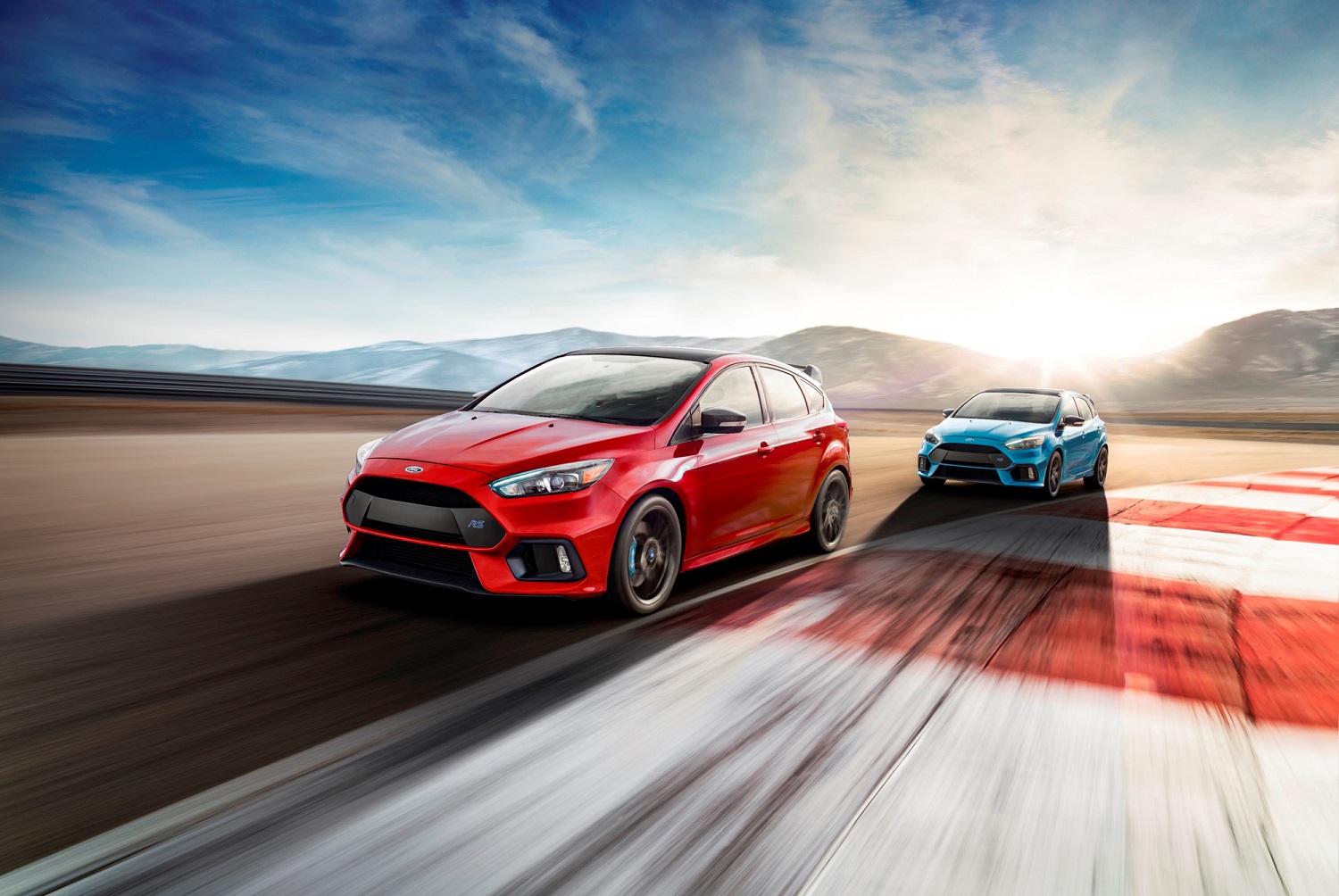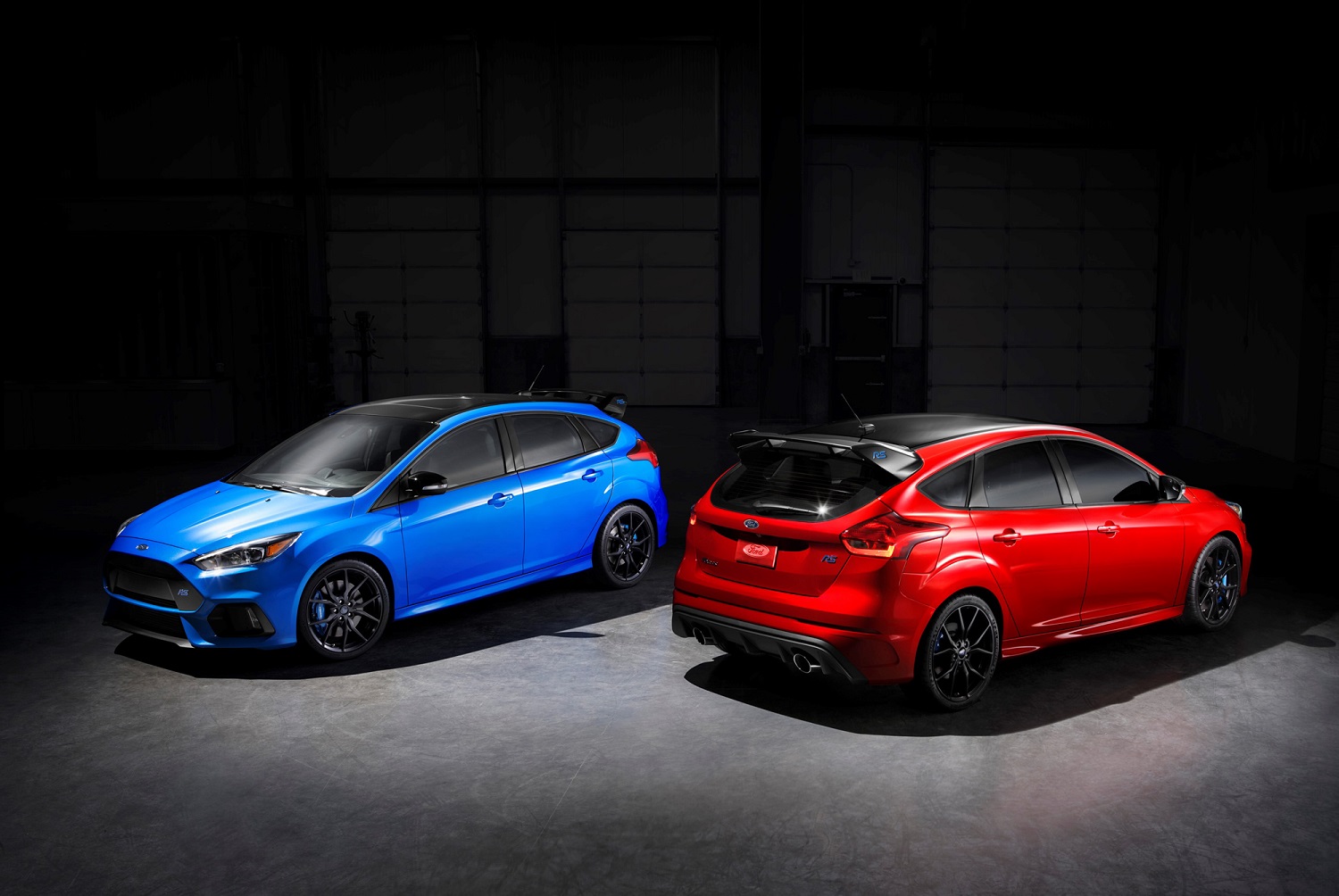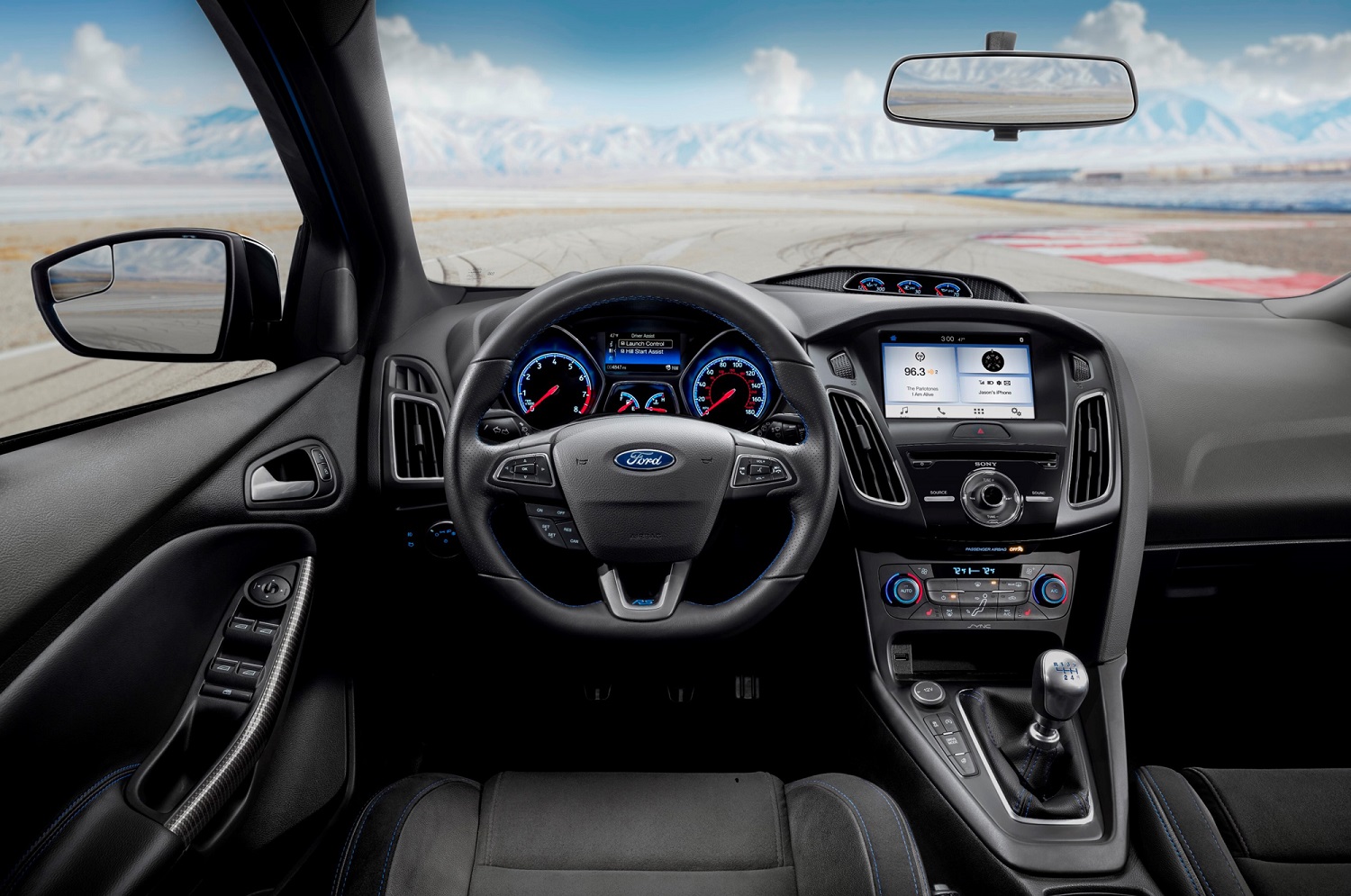The limited edition includes performance and appearance upgrades to distinguish it from the standard RS. The biggest change is the addition of a Quaife mechanical slip differential to the front axle. In low grip situations, such as on ice or mud, or during spirited driving through corners, this ensures that the wheel with more traction gets a larger share of power.
The limited edition features a black roof, spoiler, and mirror caps, whereas these are body-colored on the standard models. Blue RS decals were added to the spoiler and wheel center caps. On the inside, you’ll find carbon fiber accents on the door handles, handbrake lever, and turbo boost gauge surrounds.
The optional RS2 package comes standard on the limited edition, which includes an 8-way power driver’s seat, leather-trimmed Recaro seats, heated exterior mirrors, heated front seats, heated three-point steering wheel. and a voice-activated navigation system with SiriusXM Traffic and Travel Link. The RS’s optional 19-inch forged wheels are also standard on this model.
Finally, in addition to the already available Nitrous Blue paint option, the special model also comes in Race Red.
“To satisfy strong demand for the ever-popular Focus RS, I’m very excited that we’re bringing this limited-edition vehicle to North America,” Ford Performance marketing manager Henry Ford said. “We have spent a great deal of time listening to our customers, speaking to owners’ club members, reading comments and suggestions on enthusiast websites, and even studying various forum Photoshop renderings.”
Production for the limited edition Focus RS will be restricted to 1,500 units — 1,000 for the US and 500 for Canada, with pricing yet to be announced. We’re thinking somewhere in the mid-to-high $40,000 range but there will undoubtedly be dealer markups. You can place an order for one this summer, and expect delivery in the fall.
Updated 5-31-2017 by Ronan Glon: Added official pictures.





